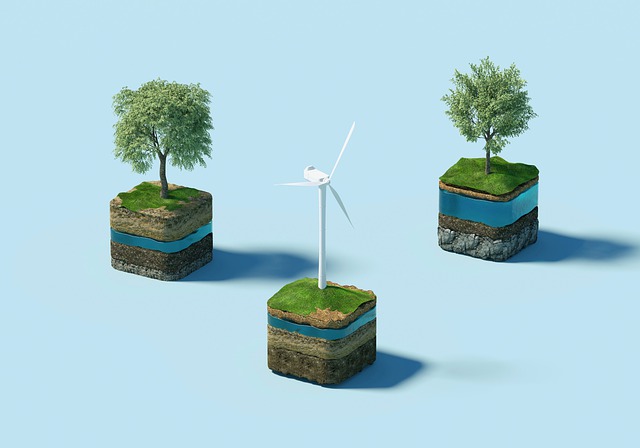In today’s rapidly changing world, environmental sustainability has become a crucial topic of discussion. One area that often gets overlooked but plays a significant role in preserving our planet is wastewater treatment. Engaging the public in this process is essential for creating a sustainable future. By educating and involving individuals in understanding the importance of wastewater treatment, we can collectively work towards a cleaner and healthier environment. With the potential to make a significant impact, public engagement in wastewater treatment is undeniably a crucial step towards achieving environmental sustainability.
Importance of Wastewater Treatment and Environmental Sustainability
Wastewater treatment plays a vital role in maintaining environmental sustainability. It involves the processes and systems designed to remove contaminants from wastewater before it is released back into the environment. The need for effective wastewater treatment cannot be overstated, as it has a direct impact on the health of ecosystems, human health, and the overall quality of life.
The Need for Effective Wastewater Treatment
Effective wastewater treatment is essential to protect water bodies, such as rivers, lakes, and oceans, from pollution. Untreated wastewater contains harmful substances, including pathogens, organic matter, and chemicals that can have significant negative consequences on aquatic life and the health of ecosystems. Additionally, wastewater treatment helps prevent the contamination of drinking water sources, reducing the risk of waterborne diseases and ensuring the safety of the public.
Link Between Wastewater Treatment and Environmental Sustainability
Wastewater treatment is closely linked to environmental sustainability. By removing pollutants from wastewater, treatment plants help reduce the ecological footprint on natural water bodies and facilitate their regeneration. Treated wastewater can also be reused for non-potable purposes such as irrigation, industrial processes, or groundwater recharge, conserving precious freshwater resources. By minimizing the discharge of pollutants and preserving ecosystems, wastewater treatment contributes to maintaining a healthy environment for current and future generations.
Understanding Wastewater Treatment Processes
Wastewater treatment involves a series of processes to remove contaminants and ensure the safe disposal or reuse of the treated water. These processes are categorized into three main stages: primary, secondary, and tertiary treatment.
Primary Treatment
Primary treatment is the initial step in the wastewater treatment process and involves the physical removal of solid particles and debris. Through processes such as sedimentation and filtration, large solids are separated from the wastewater, forming a sludge that can be further treated. Primary treatment also assists in reducing the concentration of suspended solids, oil, and grease.
Secondary Treatment
Secondary treatment focuses on the biological removal of organic matter and dissolved solids. Activated sludge processes, trickling filters, or biofilm reactors provide an environment for microorganisms to break down the organic compounds present in the wastewater. This stage significantly reduces the biochemical oxygen demand (BOD) of the water, making it less harmful to the receiving bodies of water.
Tertiary Treatment
Tertiary treatment is the final stage of the wastewater treatment process and aims to further purify the water to meet specific water quality standards. It involves the use of advanced filtration techniques, such as reverse osmosis, ultraviolet disinfection, or chemical processes such as chlorination. Tertiary treatment ensures that the treated water is safe for reuse or discharge into sensitive water bodies.
Challenges in Public Engagement
Engaging the public in wastewater treatment initiatives is crucial for their success. However, several challenges hinder the effective involvement of the community in these processes.
Lack of Awareness and Understanding
One of the major barriers to public engagement in wastewater treatment is the lack of awareness and understanding among the general public. Many individuals are unaware of the importance of wastewater treatment and the potential consequences of inadequate treatment. Therefore, efforts must be made to educate the public about the significance of wastewater treatment and its direct impact on the environment and their daily lives.
Negative Perception and Stigma
Wastewater treatment is often associated with negative stigmas and perceptions, which can hinder public engagement. Some individuals view wastewater treatment facilities as unsightly and unpleasant, leading to opposition and resistance to new projects or infrastructure upgrades. Addressing these negative perceptions and highlighting the importance of wastewater treatment in maintaining environmental sustainability is crucial for garnering public support.
Low Participation and Involvement
Another challenge in public engagement is the low level of participation and involvement from the community. Many individuals may feel disconnected from wastewater treatment processes, considering them to be the responsibility of the government or industry. Encouraging active participation and involving the public in decision-making processes can help create a sense of ownership and responsibility, fostering a greater commitment to environmental sustainability.
Benefits of Engaging the Public in Wastewater Treatment
Engaging the public in wastewater treatment initiatives brings a multitude of benefits, both for the community and the overall effectiveness of the treatment processes.
Increased Awareness and Education
By involving the public in wastewater treatment initiatives, awareness and education about the importance of effective treatment can be significantly increased. When individuals understand the impact of untreated wastewater on the environment and public health, they become more supportive of treatment efforts and are more likely to implement actions that contribute to environmental sustainability.
Community Ownership and Responsibility
When the public is actively engaged in wastewater treatment processes, they develop a sense of ownership and responsibility for the outcomes. Communities that participate in decision-making processes and understand the importance of their role in wastewater treatment are more likely to take steps to reduce pollution, properly maintain their wastewater systems, and support upgrades and improvements.
Improved Processes and Innovations
Public engagement can lead to the identification of innovative solutions and improvements in wastewater treatment processes. By involving the community, there is an opportunity to gather local knowledge and insights that can help refine existing systems and develop new technologies or practices. Public input can contribute to the development of more efficient, cost-effective, and sustainable wastewater treatment methods.
Strategies for Public Engagement
To effectively engage the public in wastewater treatment efforts, it is essential to utilize various strategies that foster participation and collaboration.
Education and Outreach Programs
Developing comprehensive education programs that target different segments of the community is crucial for increasing awareness and understanding. Educational initiatives can include workshops, seminars, public awareness campaigns, and school programs that teach the importance of wastewater treatment and its connection to environmental sustainability.
Public Consultation and Involvement
Engaging the public through public consultations and involvement in decision-making processes is vital for ensuring community support and ownership. Public consultations provide a platform for individuals to express their concerns, provide feedback, and participate in the decision-making process regarding wastewater treatment initiatives. It is important to create opportunities for meaningful dialogue and actively consider the input received from the community.
Partnerships and Collaborations
Fostering partnerships and collaborations with various stakeholders, including community organizations, local businesses, educational institutions, and environmental groups, can enhance public engagement in wastewater treatment. By working together, these entities can pool resources, share knowledge, and coordinate efforts towards a common goal of environmental sustainability. Collaborative projects can also help build trust and credibility among the public, promoting stronger engagement.
Successful Case Studies of Public Engagement in Wastewater Treatment
Several case studies demonstrate the successful implementation of public engagement strategies in wastewater treatment projects worldwide. These examples highlight the effectiveness of engaging the public in decision-making processes and the positive outcomes that can be achieved.
The Singapore Model
Singapore has successfully implemented comprehensive public engagement initiatives to involve the community in wastewater management. Through the Active, Beautiful, Clean Waters (ABC Waters) program, Singaporeans are encouraged to take an active role in maintaining and enhancing the country’s water resources. The program includes educational campaigns, community involvement in waterfront projects, and the creation of beautiful spaces that integrate wastewater treatment facilities seamlessly into the urban landscape.
The Copenhagen Model
Copenhagen, Denmark, has embraced public engagement in wastewater treatment through its “Climate Plan” initiative. The city actively involved residents in the decision-making process and educated them on the benefits of sustainable wastewater treatment. Copenhagen successfully transformed public perception by highlighting the value of treated wastewater as a resource for district heating and cooling systems, reducing reliance on fossil fuels and contributing to the city’s overall carbon neutrality goals.
The Melbourne Model
Melbourne, Australia, implemented the “Love Your Drain” campaign to engage the public in protecting the city’s sewage system and raising awareness of its vital role in wastewater treatment. This initiative educated residents about the impact of improper disposal of waste on the system and the environment, and encouraged responsible waste management practices. By involving the public in monitoring and reporting issues in the sewage system, Melbourne effectively improved the overall efficiency and effectiveness of wastewater treatment processes.
Barriers to Successful Public Engagement
Despite the potential benefits, there are several barriers that may hinder successful public engagement in wastewater treatment efforts.
Lack of Funding and Resources
Insufficient funding and resources can restrict the implementation of effective public engagement initiatives. Limited financial support may result in inadequate staff, resources, and tools to effectively educate and involve the public in wastewater treatment projects. Adequate funding and resource allocation are crucial for the successful implementation of comprehensive public engagement strategies.
Resistance to Change
Resistance to change can also impede public engagement efforts. Some individuals may be resistant to new wastewater treatment projects or upgrades due to concerns about increased costs, inconvenience, or disruption to their daily lives. Addressing these concerns through effective communication and transparent engagement processes is essential to overcome resistance to change.
Political and Governance Issues
Political and governance issues, such as bureaucracy, lack of coordination, and conflicting interests among stakeholders, can hinder public engagement in wastewater treatment initiatives. These issues may delay decision-making processes, limit access to information, or prevent effective communication with the public. Overcoming political and governance barriers requires strong leadership, collaboration, and accountability among government agencies, industry, and community stakeholders.
Overcoming Barriers to Public Engagement
To overcome barriers to public engagement in wastewater treatment, specific measures must be taken to address funding constraints, resistance to change, and political or governance issues.
Allocating Sufficient Funding and Resources
Governments and relevant authorities must prioritize wastewater treatment and allocate sufficient funding and resources to support public engagement activities. Adequate budget allocations can ensure the availability of skilled staff, educational materials, outreach programs, and initiatives that effectively engage the community in wastewater treatment projects.
Creating a Vision for Change
Effective communication is key to overcoming resistance to change. By clearly articulating the vision and benefits of wastewater treatment projects, leaders can create a positive narrative that showcases the value of public engagement and addresses concerns. Communicating the long-term benefits, such as improved water quality, ecosystem health, and a healthier community, can help foster support and minimize opposition.
Improving Governance and Policy Measures
Addressing governance issues requires improved coordination among different stakeholders and the development of clear policies and guidelines. Enhanced communication channels, streamlined decision-making processes, and transparent governance structures can improve public trust and confidence in wastewater treatment initiatives. Collaboration among government agencies, regulatory bodies, industry, and community representatives is crucial for effective governance and policy measures.
Recommendations for Engaging the Public in Wastewater Treatment
To enhance public engagement in wastewater treatment, the following recommendations can be implemented:
Developing Comprehensive Education Programs
Investing in comprehensive education programs that target different segments of the community is vital for increasing awareness and understanding. Educational initiatives should focus on explaining the importance of wastewater treatment, the consequences of inadequate treatment, and the role of the public in supporting sustainable solutions. These programs can be delivered through schools, community centers, online platforms, and public events.
Designing Effective Communication Strategies
Developing effective communication strategies is essential for engaging the public in wastewater treatment. Clear and concise messaging, utilizing multiple communication channels, and tailoring messages to specific target audiences can help overcome negative stigmas and build public support. Engaging visuals, community testimonials, and success stories can be used to convey the benefits of wastewater treatment and its connection to environmental sustainability effectively.
Building Trust and Addressing Concerns
Building trust with the public is vital for successful public engagement. Open and transparent communication, active listening to public concerns, and providing accurate information are key elements in establishing trust. Addressing concerns related to costs, potential disruptions, and health and safety issues will help alleviate public anxieties and foster support for wastewater treatment initiatives.
Conclusion
Engaging the public in wastewater treatment is a crucial step towards environmental sustainability. By raising awareness, fostering community ownership, and involving the public in decision-making processes, the barriers to effective wastewater treatment can be overcome. The successful case studies and strategies discussed demonstrate the positive outcomes that can be achieved through public engagement initiatives. By allocating sufficient funding and resources, creating a vision for change, and improving governance and policy measures, governments and relevant stakeholders can support comprehensive public engagement in wastewater treatment. By implementing the recommendations and strategies outlined, individuals and communities can actively contribute to preserving and protecting our environment for generations to come.



